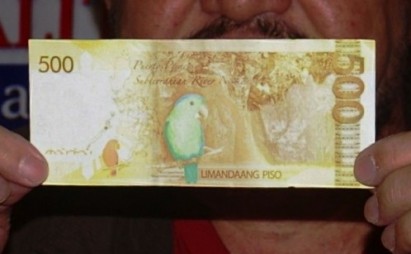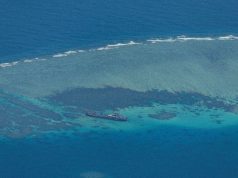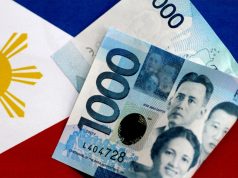(Editor’s note: Cesar Polvorosa Jr. is a business school professor of economics, world geography, and international business in Canada. He is also a published writer in economics, business, and literature. This is a significantly revised and extended version of the article that originally appeared in The Canadian Business Strategist Magazine entitled Business Strategy in a New Era of Uncertainty. His two-part article on the Philippines and India was published by Interaksyon last June 15 and 18.)
There is a growing sense that the world is at a major crossroad. Critical global trends and developments indicate that the path ahead will be fraught with challenges of sluggish economic growth and geopolitical uncertainty.
The much anticipated global economic recovery had been anemic and the Great Recession had degenerated into “secular stagnation” and “Greater Depression” – these terms recently used by renowned economists Lawrence Summers and J. Bradford DeLong respectively attest to the pervading air of pessimism.
The persistence of the economic malaise has cast doubts on the continuing efficacy of traditional counter cyclical fiscal and monetary policies now in place for several years. Keynesian policies are making little headway in restoring growth and reducing unemployment.
In the meantime, the Arab Spring has morphed into the Autumn of upheavals and internecine strife with ISIS emerging as a new and deadly peril. The crisis in Ukraine heralds years of confrontation between EU and NATO against a resurgent Russia. There’s also the Ebola threat in West Africa which is growing exponentially in virulence and scope.
The West Philippine Sea and the East China Sea are wracked by tension over the territorial disputes between China and Japan, the Philippines and Vietnam. What is the significance of these developments in a global geopolitical and economic context?
The current global economic and political uncertainty stands in stark contrast to the prosperity of the late 20th century and much of the first decade of the 21st century. The 1980s were comparatively benign and the rapid economic expansion in the 1990s lulled especially North American managers and technocrats into complacency. In the boom years of the 1990s, the main agenda for global companies had been exploiting profitable opportunities from the vigorous US market, the transition economies of East Europe, investment opportunities in China, and the advent of the Internet.
The demise of the business cycle was one view gaining traction. Many young managers and professionals of that period had no memory or appreciation of a recession. The Philippines specifically during the administration of President Fidel Ramos had been proclaimed as the next Newly Industrialized Country (NIC) in the making. The global economy would stride into the new millennium with sustained growth and rush headlong into a future of peace and prosperity guided by free markets and advanced technologies.
The new normal
Uncertainty or volatility is not a novel experience for the world economy which had been historically characterized by business cycles or the periodic ebb and flow of economic activities. Indeed, the 1930s was the era of the Great Depression.
The eminent economist, Joseph Schumpeter proposed the idea of a “creative destruction” or the process where economic progress is achieved through the creation of new and better technology at the expense or destruction of obsolescent technology. Companies have historically been confronted by the challenge and opportunities of the emergence of new technologies and disruptive effects of innovations. Thus, a manufacturer of pagers that do not adapt to the era of cell phones is doomed to extinction. Economic progress under Capitalism is therefore necessarily disruptive.
The dotcom bust at the turn of the 21st century was a rude awakening and the 9/11 attacks came as an unprecedented traumatic shock. Though economic recovery returned, there have always been the heightened national security fears about terrorist plots.
Finally, the prolonged Great Recession ended any semblance of business normalcy for while the expansions and contractions of the business cycle occur periodically, the economic weakness and uneasiness since late 2007 had been unusually long and severe. The unsettled environment has become the new normal. We have entered a new era of global uncertainty.
How can the Philippines cope?
How different is this new era of uncertainty? Profound and extensive interconnectedness engendered by globalization and advanced telecoms indicates greater potential for depth, breadth, and speed in the transmission of instability. With the maturation of the Internet and IT, external shocks will rapidly ripple across global markets intensifying the potential for panic and knee jerk reactions. Financial risks are magnified due to over leveraging in response to the wave of deregulation. The spread of globalization has created fierce and more numerous competitors.
It may be tempting to dismiss the relevance of the feeble world economy and the role of global uncertainty for the Philippines as the country had been achieving heady economic expansion since 2010. But the Philippines cannot decouple itself from the state of the global economy in terms of the country’s engagement with world trade, investments, OFW deployment, reliance on remittances, and the prevalence of conflict and instability may eventually curb the country’s economic growth.
How can the country cope with the greater uncertainty? In general, a country’s economy reduces its risks in an unstable environment by adopting more prudent financial and economic policies. We can analyze the necessary responses from both micro and macroeconomic perspectives. Let’s start with the micro level which refers in this case to Philippine firms.
How are businesses affected and how would they cope with the highly uncertain business environment? A sudden bout of volatility will reflect in a decline in stock market prices. A company stock will be hit as part of a general negative market sentiment and the perceived specific adverse effects on the company through the operations side or the costs of doing business (CODB) and via the output side through their revenues and markets.
On the operations side, the CODB that are most susceptible to short run, violent fluctuations are foreign exchange and interest rates — factors that trigger rapid increases in prices of oil and raw materials and depreciation of the domestic currency. Inimical effects on firms depend on their sensitivity or vulnerability to changes in these specific variables. Interest rates would affect credit costs which impact all firms. For exchange rate fluctuations, the most vulnerable would be firms dependent on raw materials imports, semi processed products etc. used in their supply chain and exchange rate losses from off shore operations as well as companies that use oil or gas for their production. Thus, investors react as the turmoil moves from the financial markets to the real sector i.e. from Wall Street to Main Street.
On the output side, turbulent economies and politics can severely impact the market of the company. Thus, Greek companies got a double whammy not only from the domestic fiscal crisis but the tanking of demand for shipping and tourism services — the two major pillars of the Greek economy as Western European economies went into a tailspin. Across the Mediterranean, some MNCs operating in Libya and Syria had been forced to leave when those countries were wracked by civil war. The Canadian company Bombardier’s planned JV to manufacture airplanes in Russia is on hold due to the deterioration of relations between Russia and the West.
The airline industry illustrates a business that is buffeted by the headwinds on both input and output side. Battered by the free fall in air travel from the post 9/11 period, airlines then stalled from a confluence of both high oil prices and the Great Recession. Meanwhile, the industry deregulation encouraged the growth of budget carriers that challenged the legacy carriers.
What can Philippine businesses do in this new era of uncertainty?
1. A strategic mindset: acceptance
In the new era of uncertainty expect the unexpected. Managers and professionals need to recognize that rare, major, unforeseen events or “black swan” events as conceptualized by statistician and scholar Nassim Taleb can occur. The classic event to illustrate the black swan event had been the massive tragedy of 9/11 but they can also refer to the emergence of disruptive technologies such as the computers and Internet. The acceptance of the likelihood of black swan events facilitates the planning and response process as it pushes the organization to be dynamic and open to changes. The organization needs to accept that incorporating seemingly irrational scenarios is a rational exercise. The strategic mindset of acceptance of black swan events is an impetus to undertake an uncertainty preparation framework for the organization.
2. Effective environmental scanning
Knowing that the firm is operating in a new era of uncertainty encourages the organization to undertake a thorough and effective environmental scanning. There will always be pure black swan events (e.g. 3/11 tsunami in Japan) but there will also be developments whose possible outcomes can be incorporated into various scenarios such as the trajectory of the Eurozone crisis, the rise of mobile devices, Chinese economic growth, the Syrian and Iraqi crisis etc.
3. Due diligence and analysis
Having engaged in a meaningful environmental scanning, the company can examine in greater detail, analyze and evaluate various scenarios. Thus, the company can use sensitivity analysis that focuses on assuming a wide range for specific variables to assess their consequences on the firm. The strategic mindset of acceptance of the improbable becomes relevant as e.g. while oil prices may reasonably reach a high of $150 per barrel, incorporating an unknown extreme event may mean assuming a maximum of $175 per barrel and gauge how it may affect the firm.
4. Strengthen the business
While management should try to strengthen their company at all times, it becomes an imperative in an era of uncertainty. A firm with a stronger balance sheet will be able to better withstand any external shock and to be simultaneously opportunistic such as Apple Computers with cash of $159 billion in 2013. Such a staggering cash hoard is a defensive strategy to insulate the company from a liquidity crisis but it is also an arsenal to empower the company to engage in necessary strategic acquisitions.
A prudent, realistic expansion program is vital especially in the current era of uncertainty. For example, the downfall of the iconic PanAm can be partly explained by the acquisition of too many 747s. It ended up with a lot of empty seats when the oil shock of the mid 1970s struck- certainly a black swan event. Other measures include a tighter monitoring and review of both suppliers and customers to determine those who are most vulnerable to financial shocks.
5. Enhance competitive advantage
Whether the challenge arose from market contraction, the urgency to supply a new market, a huge spike in the CODB or a convergence of various elements, the dynamic company seeks its competitive advantage as the basis for its sustainable position in the economy.
An agile and flexible company will perform well even as it operates in the era of uncertainty. The nimble firm can act speedily and decisively in responding to quickly unfolding black swan events. Firms can restructure to become flatter organizations. Often, the lines of authority and decision making are difficult to reform as they are embedded in the corporate culture. When Toyota had to grapple with major quality issues in its cars it was criticized for its slow response though this was in accordance with the Japanese management practice of consensus management (ringisei). Consensus is time intensive and while it may be optimal during stable periods, it may become a stumbling block during periods of rapid developments, uncertainty and volatility.
Some companies rely on subcontracting, outsourcing, and offshoring to keep costs down. However, improper implementation can hamper the formation of a dedicated in-house pool of experts and lessen control on the production process e.g. supply chain issues delayed Boeing’s 787 project because of over-reliance on subcontractors.
6. Stay the course but be flexible
With unexpected changes it may appear timely to question the strategy of the organization, if not its very mission itself. However, unless there’s a fundamental change in the business environment that adversely affects the competitive advantage of the company it is best for it to stay the course. The challenge for management is that such clarity of adhering or changing strategy may only come after some period as the contours of the fluid environment becomes definite. An optimal approach for the company can be to adopt an “emergent strategy” which as propounded by business scholar Henry Mintzberg means being flexible and opportunistic while continuing to stay the course on its main path for as long as a “game changer” has not occurred.










